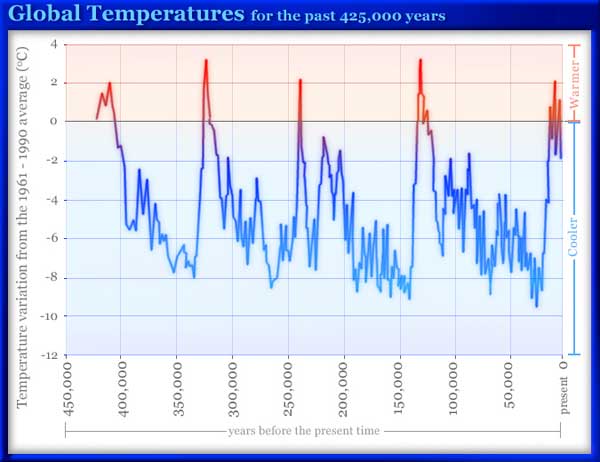CO2 levels increase from 180 parts per million to 280 parts per million and this is sufficient to raise temperature 7C and melt ice that would have been 4 kilometres thick in Canada and Northern Europe.
The earth now has a CO2 level of 407 part per million and it is still rising fast due to our burning of coal and oil. CO2 will last in the atmosphere for hundreds or thousands of years and is only absorbed by the environment very slowly. This level of CO2 has not been seen for 3.5 million years and we then had temperatures 3C warmer than today and sea levels 12 metres higher than today.
The problem is that we have not stopped increasing our production of CO2 and in fact are still speeding up the rate of production and will probably pass 550 parts per million or more before we get it under control.
Scientists believe that we are heading for a point very soon when we will break the cycle of ice ages and the planet will stay hot for thousands of years with temperatures 4c or 5C warmer than today and sea levels approaching 60 metres higher depending on how much of the Greenland and Antarctica ice sheet melts.
Although the timescale for some of this is long, short term changes will devastate the economies and lifestyles of most people alive today.



 RSS Feed
RSS Feed